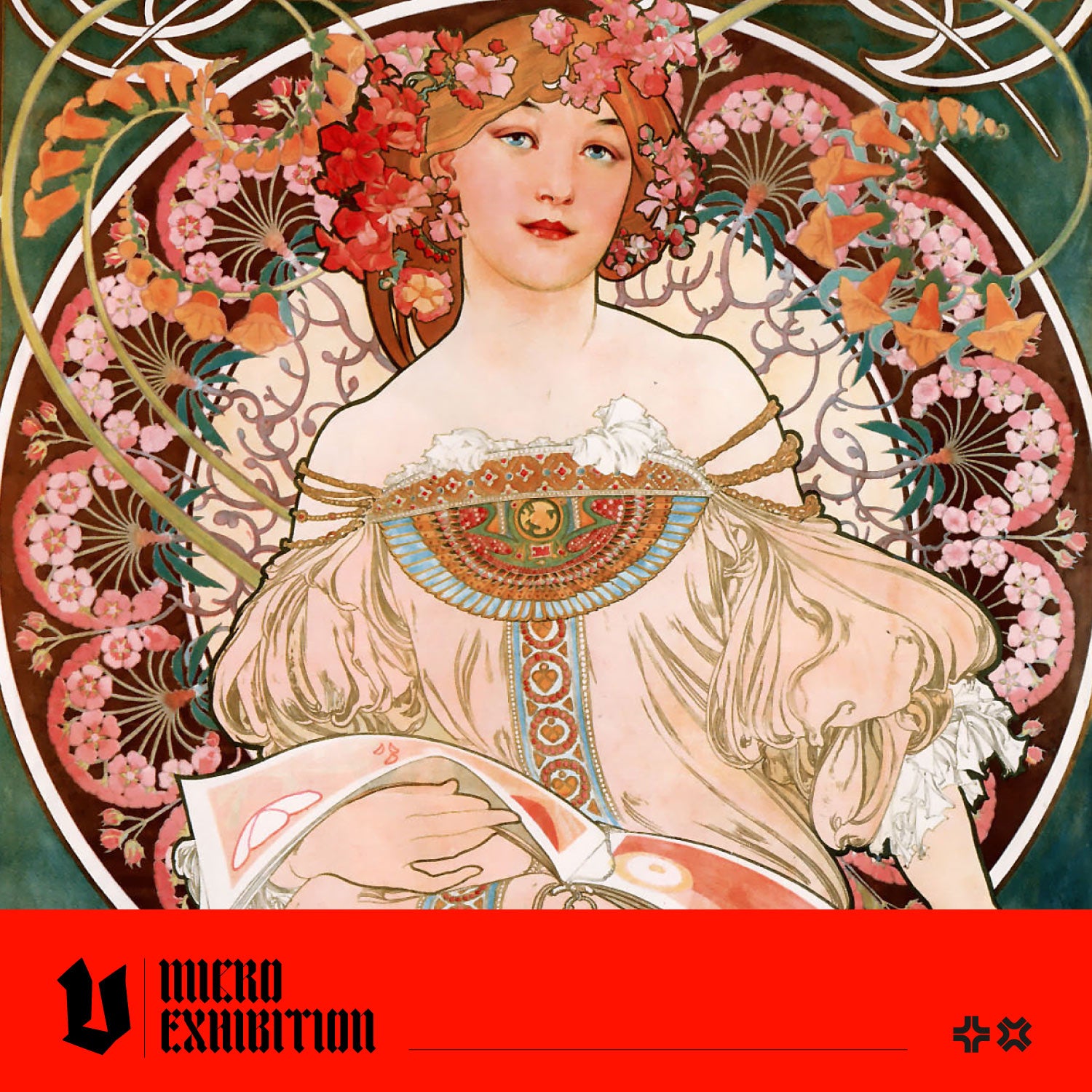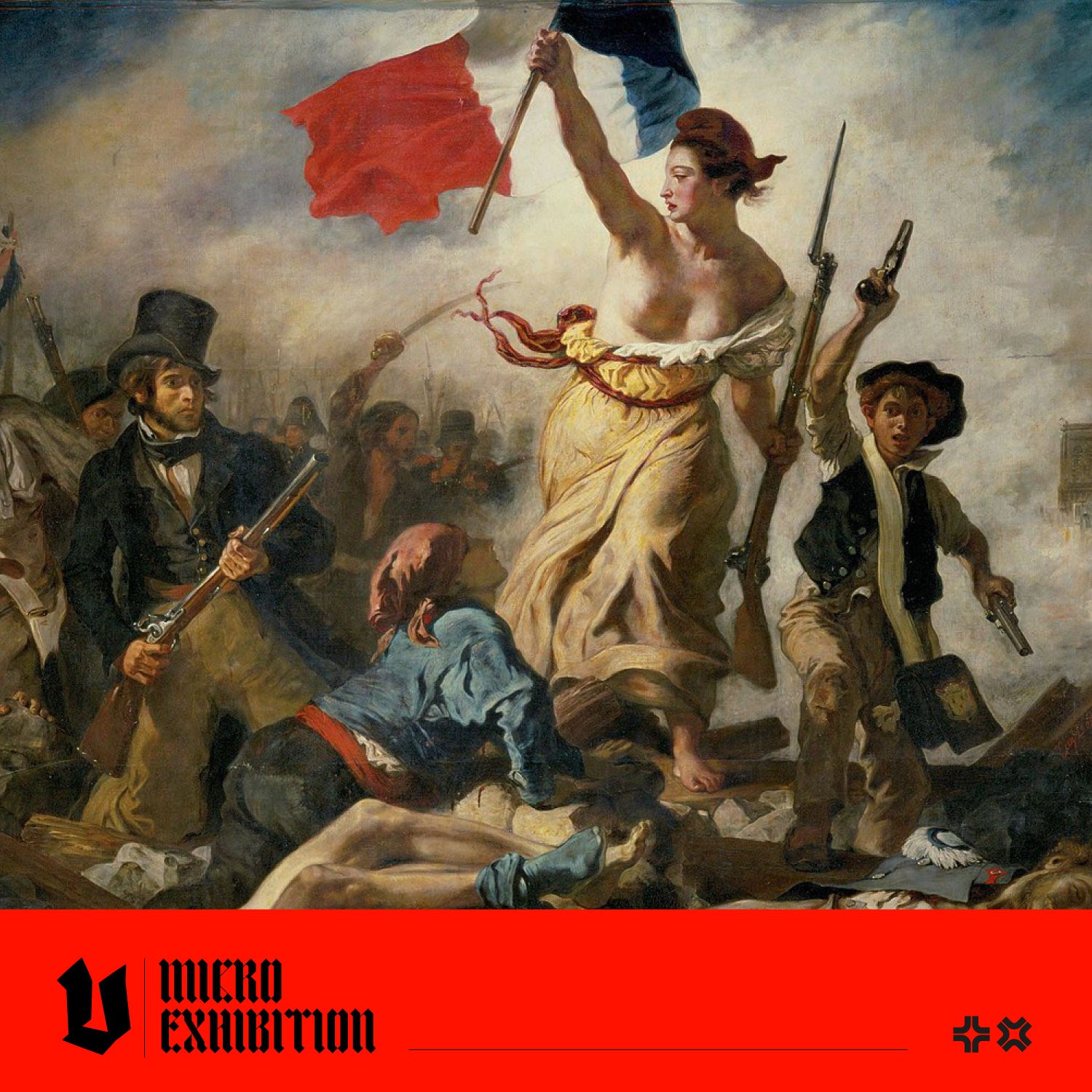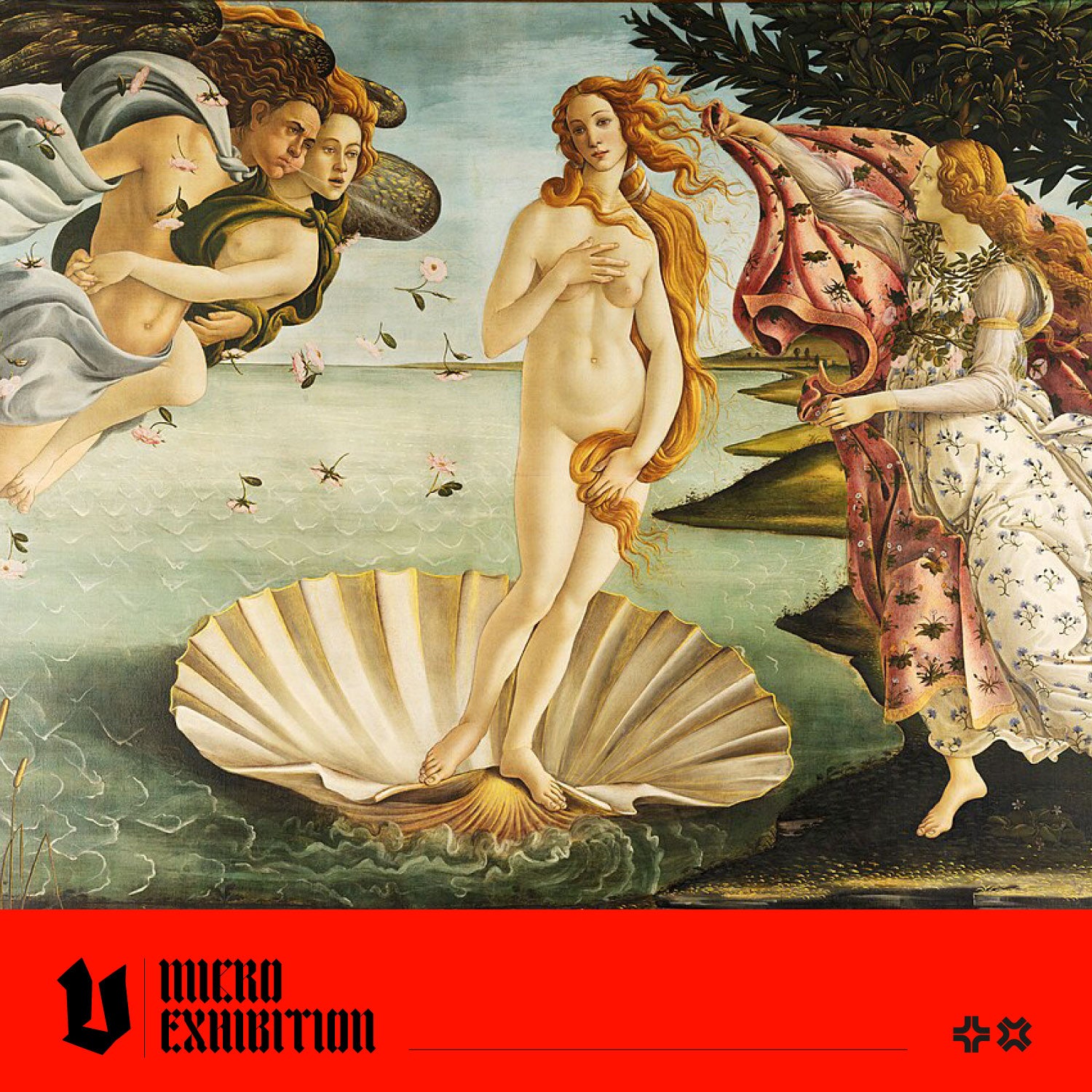Join us for the first instalment of our new series exploring the fascinating and diverse artistic genres, styles, techniques and movements that have shaped the creative landscape across continents and centuries. From the dramatic Renaissance masterpieces of Europe to the breathtaking vibrancy of the colours of Persian miniature painting, we hope this series will help you discover something new about a familiar period or introduce you to a new favourite artist.
For this first article, we're exploring one of our favourite movements; Art Nouveau. The captivating colours and shapes have enthralled us for years, and we loved researching this topic to share some of the fascinating history, and beautiful designs with you. Enjoy!
 Tiffany window in Louis Comfort Tiffany's house at Oyster Bay, New York (1908) |
An Introduction to the Art Nouveau Movement
"What must be avoided at all cost is...the parallel and symmetry. Nature is the greatest builder of all, and nature makes nothing that is parallel and nothing that is symmetric." - Hector Guimard, architect and designer.
The Art Nouveau style is characterised by undulating, graceful lines and shapes combined with elegant, muted colour palettes. This movement spanned 1890-1910 and rebutted the 19th-century trend for ornate, ostentatious art replicating historical designs. It is influenced by nature, geometric forms, Japanese art (known then as Japonisme, a French term used to describe the trend) and the Arts and Crafts movement. Both in terms of design - they were inspired by botanical and natural elements and the artists' socialist values. They believed in the importance of design to improve people's lives, and that beautiful art, products and environments should be accessible to all.
 Pax, mosaic by Miksa Róth, which received the silver medal at the Paris World Exhibition in 1900 |
"French Art Nouveau was linked to government-supported efforts to expand the decorative arts and associated craft industries. Private residences and luxury objects were the focus of many Art Nouveau designers, including Emile Gallé, who made both decorative glass and furniture. Despite the close association of Art Nouveau with luxury items, the style is also apparent in urban design, public buildings, and art for the masses. Horta's Maison du Peuple was the centre for the socialist Belgian Workers' Party, and among the most famous examples of Art Nouveau style are Hector Guimard's entrances to the Paris Metro, the city's new public transportation system." - History of Modern Art.
This style was immensely popular in application (it was used in art, architecture, and decoration such as pottery and furniture) and internationally. It began in Belgium and spread throughout Europe, the United Kingdom, Russia, the United States and South America. We're using the term Art Nouveau in this article to describe the movement, but many countries have local names for this and related styles. The immense mass-market popularity of Art Nouveau was due in part to the advances of the printing press, taking art out of the drawing room and into the hands of the population.
 Paris metro station entrance at Porte Dauphine designed by Hector Guimard for the 1900 Exposition universelle |
Who Were Some Notable Art Nouveau Artists?
Lots of artists were pivotal in shaping and defining the Art Nouveau art movement. Here are some of the many prominent artists of the period:
- Alphonse Mucha (1860-1939): A Czech artist who created popular and iconic theatrical posters, notably of famous French actress Sarah Bernhardt.
- Hector Guimard (1867-1942): A French architect and designer who significantly contributed to Art Nouveau architecture, notably designing iconic entrances for the Paris Métro stations. His work can still be admired today, though Porte Dauphine Métro station is the only entrance in its original location.
- Antoni Gaudí (1852-1926): A Catalan architect from Spain known for his organic approach to art, design and architecture. To this day, visitors flock to marvel at his masterpiece, the Sagrada Família church in Barcelona.
- Émile Gallé (1846-1904): A prominent French artist known for his innovative glassware and furniture. He founded École de Nancy, a group of Art Noveau artists working in Nancy, France.
-
Louis Comfort Tiffany (1848-1933): American glassmaker and painter, first design director of his father's company, Tiffany and Co. Among his many interior design projects, he redesigned several staterooms and the entrance hall of the White House at the behest of President Chester Allen Arthur. He also founded Tiffany Glass Design Co, which produced the iconic Tiffany Lamps. (Learn about Clara Driscoll, who designed over 30 Tiffany lamps here.)
Where Can I Learn More About Art Nouveau?
Art Nouveau - The National Gallery of Art Washington
History of Modern Art Copyright © by Dr Kristen M. Harkness; Monica Obnisk; Dr Charles Cramer; Dr Kim Grant; Dr Beth Harris; Dr Steven Zucker; Dr Noelle Paulson; and Dr Vasile-Ovidiu Prejmerean
Unleash Your Creativity Today
Get inspired by our release, Botanical Art: An Image Archive for Artists & Designers. This is a captivating visual resource for creative minds seeking inspiration from the world of botany. Delve into a vast collection of curated botanical subjects, ranging from delicate roses and vibrant chrysanthemums to beautiful orchids, elegant irises, and radiant sunflowers.

|
This excellent book goes beyond traditional flora, embracing the allure of lush tropical plants that will transport you to paradisiacal realms. Immerse yourself in the beauty of monstera leaves, the exotic charm of bird of paradise blooms, the captivating vibrancy of hibiscus flowers, and the lavish fronds of sword ferns and snake plants. With an extensive array of fungi, succulents, and majestic trees, this archive captures the essence of nature's diversity.
Features:
Each book contains a download link providing you access to 477 high-resolution images that you can use in art and design projects.
This book is a must-have for fine artists, designers, tattoo artists, printmakers, collage artists, and anyone seeking botanical inspiration.
Own Botanical Art: An Image Archive for Artists & Designers by Vault Editions and unlock the gateway to botanical inspiration. With its extensive collection of stunning imagery and the bonus of high-resolution digital files, this book is a valuable asset for artists and designers alike. Immerse yourself in the intricate beauty of nature, unleash your creativity, and elevate your artistry. Purchase your copy today and let the captivating world of botanical art become an essential part of your creative journey.

|






